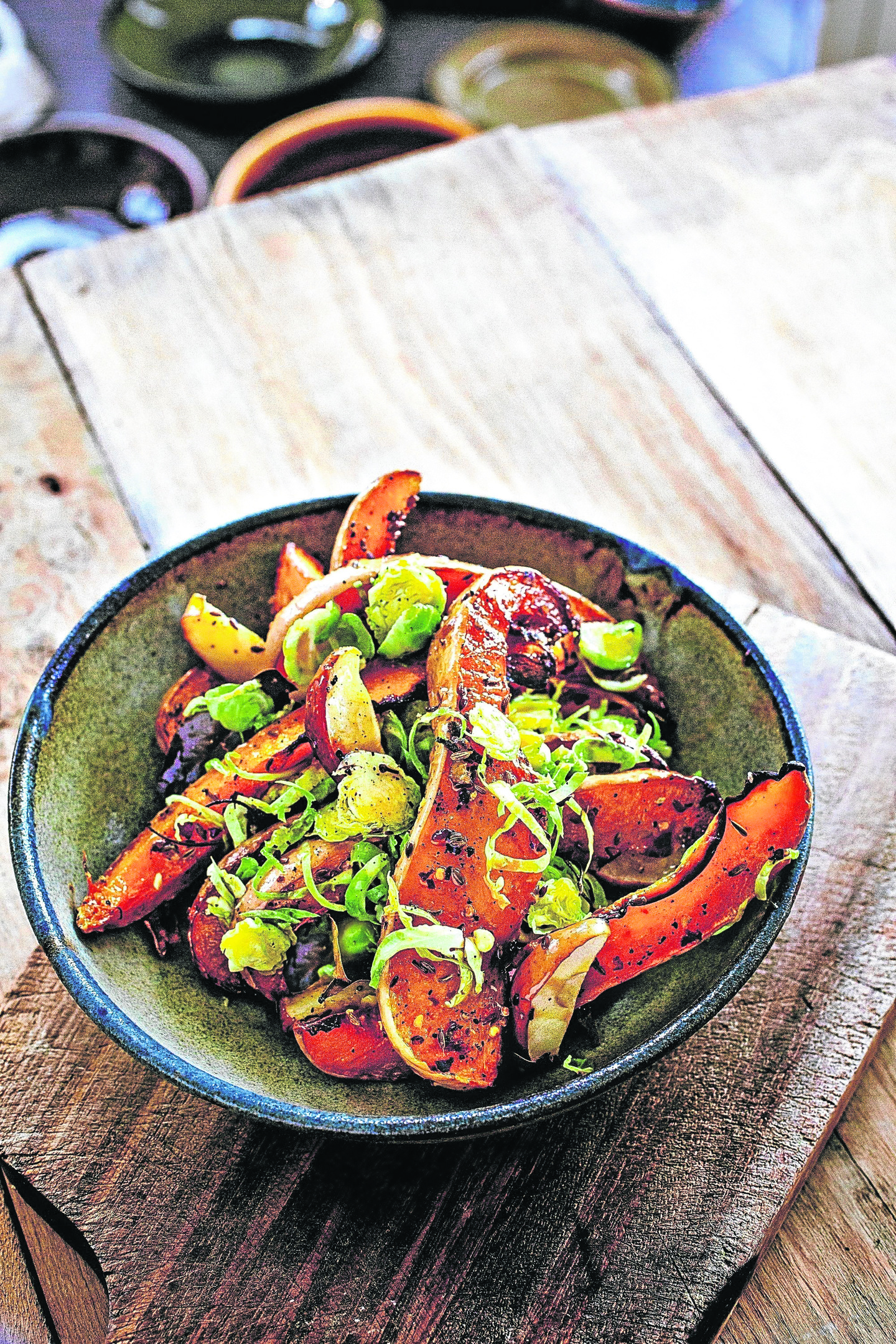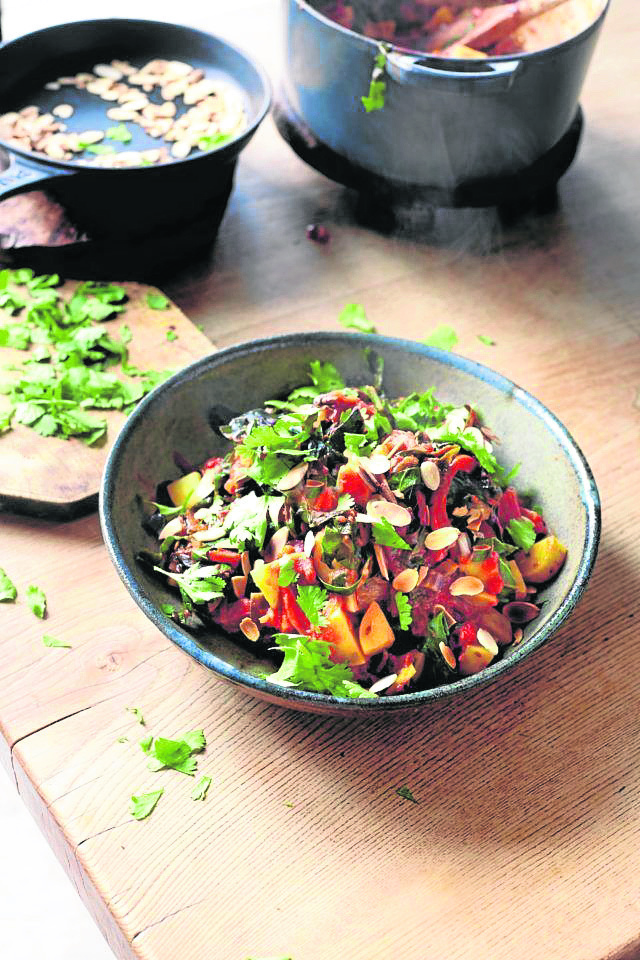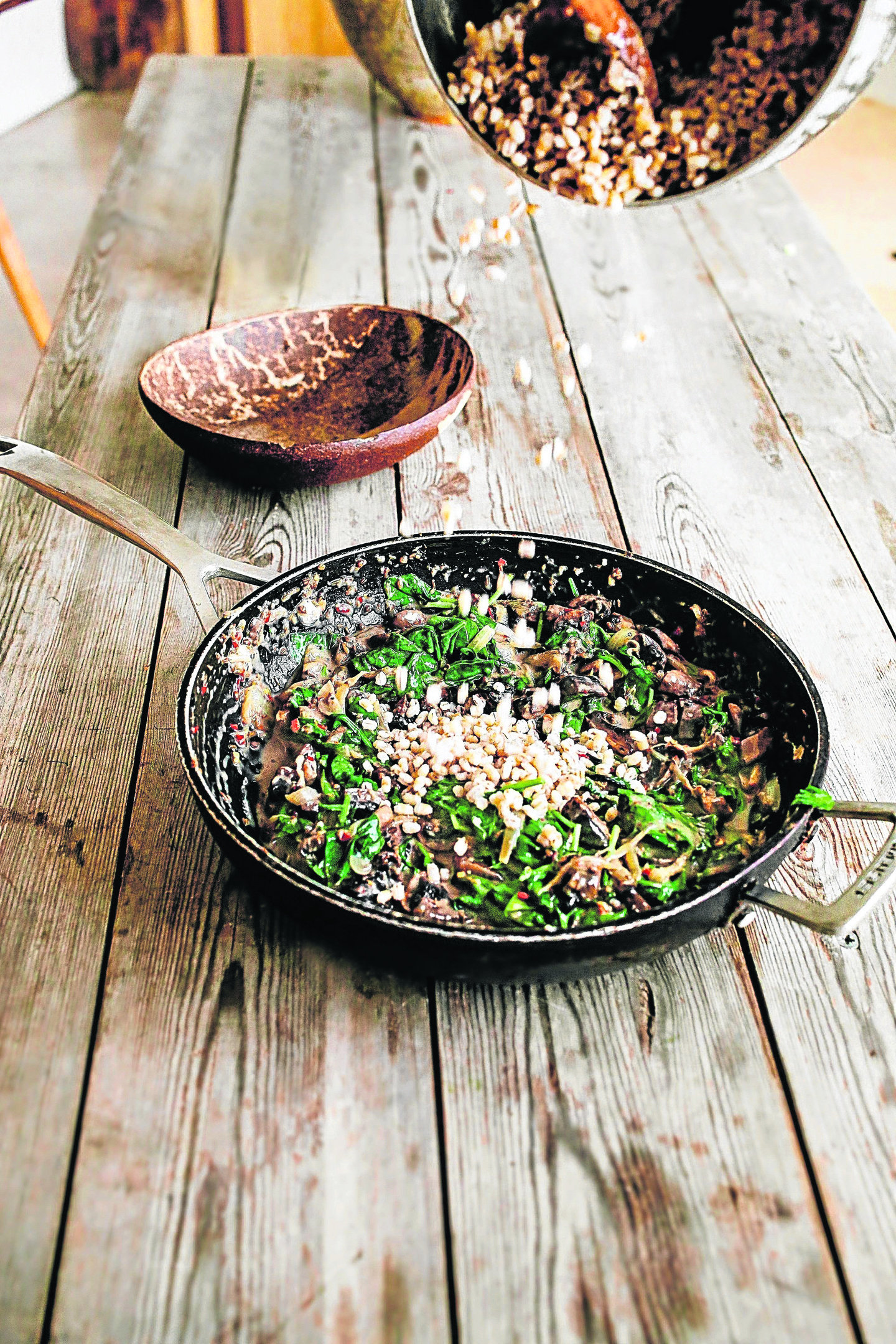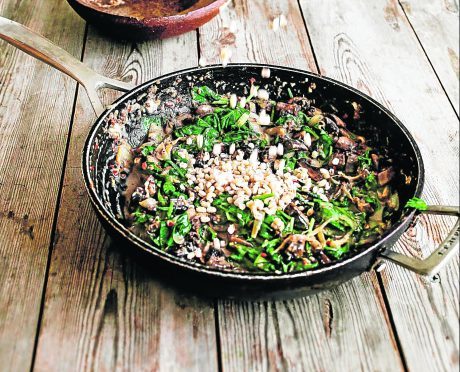In case you didn’t realise by now, Hugh Fearnley-Whittingstall really, really wants us to eat more vegetables.
The 52-year-old chef and TV personality, who lives in East Devon, has made a career out of committing to seasonal, ethically produced food, and is best known for hosting Channel 4 series River Cottage, which documents his efforts to become a self-reliant farmer in rural England.
His TV ventures have led to huge campaigns aimed at reducing food waste and changing EU fishing policies, and also the publication of several cookbooks.
Now Hugh’s back with Much More Veg and a selection of new recipes dedicated to inspiring people to become less dependent on meat – but this veg book is also vegan to boot.
“It was so close to being vegan anyway, and I thought, actually, the most inclusive form of cooking is vegan cooking,” he says, “especially as I was already talking about vegetables in their unadulterated form – making the best out of all our plant ingredients. It would have been a bit bonkers for it not to have been a vegan book. But of course, it’s for everybody.”
Hugh says he finds the huge rise of veganism amongst young people really exciting, explaining, “it has to be the direction of travel”. But you have to ask, if Hugh himself is still a carnivore – which he certainly is – does he truly think you can make plant-based meals as delicious as ones that contain meat?
“We know how easy it is to make meat delicious – you put salt and pepper on it and you put it in a frying pan and the caramel flavours are delicious. The problem with veg, for so long,” he muses, “is we’ve steamed it and boiled it and we haven’t done enough. With veg, we can caramelise the edges, we can add a little spice, we can use amazing, funky dressings – all those things will bring up the natural flavours of vegetables, which incidentally, are already pretty tasty.”
Here’s three recipes from Hugh’s new cookbook for you to try at home.
Roast Squash and Apple with Raw Sprouts
SERVES 3-4

An aromatic autumnal salad from the TV chef’s collaborator Gill Meller, that’s super easy to throw together.
The ingredients
- About 1kg squash, such as a medium butternut or acorn squash, or 1/2 Crown Prince
- 2tbsp olive or rapeseed oil
- 4-5 bay leaves, roughly torn
- 2 sprigs of rosemary, roughly torn
- A small handful of sage leaves, roughly torn (optional)
- 1tsp fennel seeds
- A pinch of dried chilli flakes
- About 175g Brussels sprouts
- 2 medium eating apples
- 25g sunflower seeds (or other seeds of your choice)
- Sea salt and black pepper
FOR THE DRESSING
- 2tbsp extra virgin olive or rapeseed oil
- 2tsp English mustard
- 1-2tsp sugar
- 1tbsp cider vinegar
- Sea salt and black pepper
The method
- Preheat the oven to 200°C/Fan 180°C/Gas 6. Halve the squash and scoop out the seeds, but don’t remove the peel.
- Cut into slim wedges, about 2cm wide at the outside edge, and place in a large roasting tray.
- Trickle over the oil then scatter over the herbs, fennel seeds, chilli flakes and some salt and pepper.
- Turn the pieces of squash over in the oil and seasonings, then place in the oven and roast for about 30 minutes until tender and nicely browned in places.
- Meanwhile, combine all the ingredients for the dressing in a large bowl, adding salt and pepper to taste.
- Trim the sprouts and remove any damaged or dirty outer leaves then slice very thinly. Add them to the bowl of dressing and mix well, breaking up the layers of sprout a bit as you go.
- Core and quarter the apples, and cut each quarter into two or three wedges (no need to peel). Set aside.
- When the squash is tender and starting to brown, add the apple wedges and stir them in with the squash and seasonings.
- Return to the oven for about 15 minutes or until the apples are tender but not broken down. Scatter the seeds over the veg and apple for the last few minutes of cooking, so they toast lightly.
- Spoon the dressed sprouts over the hot squash and apple wedges, then serve.
Pepper, Potato and Chard Stew
SERVES 4

This earthy winter warmer is based on a chachouka recipe – but seeing as Hugh’s latest book is vegan, this recipe uses no eggs. Instead, the stew has even more veg stirred through the rich pepper and tomato base.
The ingredients
- 2tbsp olive or rapeseed oil
- 1tsp cumin seeds
- 1 large onion, quartered and thinly sliced
- 1 large (or 2 small) red pepper(s) (about 250g in total)
- 200g chard
- 500g new, waxy or salad potatoes, scrubbed
- 2 garlic cloves, finely grated or crushed
- 2 x 400g tins tomatoes
- A large pinch of saffron strands
- 1/2tsp hot smoked paprika
- 1tsp sugar
- Juice of 1/2 small lemon, or to taste
- Sea salt and black pepper
TO FINISH
- 30g toasted flaked almonds
- Handful of coriander leaves
- Extra virgin olive
The method
- Place a large flameproof casserole or small stockpot over a medium heat and add the oil. When it’s hot, add the cumin seeds and let them sizzle for a minute or two.
- Add the onion with a pinch of salt, stir well, then cover and lower the heat. Let the onion sweat, stirring once or twice, for about 10 minutes.
- In the meantime, quarter, deseed and thinly slice the pepper(s). Separate the chard stalks and leaves and cut both into 1cm thick slices. Cut the potatoes into bite-sized chunks.
- When the onion is nice and soft, stir in the garlic, then add the red pepper, chard stalks and potatoes. Replace the lid and cook gently for about 20 minutes until the pepper is softened, stirring now and again to ensure nothing sticks and burns.
- Add the tomatoes with their juice, crushing them with your hands as you do so. Add the saffron, smoked paprika, sugar and some more salt and pepper and stir well. Simmer gently, uncovered, for about 15 minutes, until the potatoes are tender, stirring regularly.
- Toss in the chard leaves, cover the pan and cook for another five minutes, or until they have wilted. Stir the leaves into the stew. Take off the heat.
- Add the lemon juice, then taste and adjust seasoning as necessary, with more salt, pepper and/or lemon. Serve scattered with the toasted almonds and coriander and a trickle of extra virgin oil.
Mushroom and Spinach Spelteree
SERVES 3-4

Pearled spelt might not be a kitchen cupboard staple for many, but Hugh has come up with a delicious way to use the interesting rice alternative.
- 125g pearled spelt or pearl barley
- 1tbsp cumin seeds
- 1tbsp coriander seeds
- 1tsp fenugreek seeds (optional)
- 2tbsp rapeseed oil
- 1 large onion, quartered and sliced
- 250g chestnut or open cap mushrooms, cut into bite-sized pieces
- 1tbsp grated ginger
- 2 garlic cloves, finely grated or crushed
- 1 medium-hot red or green chilli, deseeded (for less heat, if preferred) and chopped
- 200ml coconut milk
- 150g spinach, any tough stalks removed
- Finely grated zest of 1 lemon and the juice of 1/2 lemon
- Sea salt and black pepper
- Coriander leaves, to finish
The method
- Soak the pearled spelt or barley in cold water for 20-30 minutes, if you have time. Soaked or not, rinse the grain thoroughly in a sieve, then tip into a saucepan.
- Cover with plenty of water (it will expand a lot) and add a pinch of salt. Bring to the boil, lower the heat and put the lid on.
- Simmer until tender – about 20 minutes for spelt, 40 minutes for barley. When the grain is tender, drain and return to the pan (off the hob) to keep warm.
- Meanwhile, use a pestle and mortar or spice grinder to pound or grind the cumin, coriander and fenugreek seeds, if using. It doesn’t matter if the cumin and coriander stay quite coarse, but the fenugreek should be broken down to a powder.
- Heat the oil in a large frying pan over a medium heat. Add the onion with a pinch of salt and fry for about 10 minutes, until soft, letting it colour just a little, but not brown.
- Add the mushrooms and fry with the onion for about five minutes until tender and lightly coloured. Keep stirring so the liquid released by the mushrooms can evaporate.
- Add the pounded spices and cook, stirring, for a minute or two. Add the ginger, garlic and chilli and stir briefly, then pour in the coconut milk. Stir well, making sure the coconut milk is fully amalgamated and mixed in. Scrape up any bits of caramelised veg or spice adhering to the base.
- Bring the coconut milk to a simmer and let it bubble gently for a couple of minutes to reduce a little. Then add the spinach, a handful at a time, stirring it in as it wilts.
- Take the pan off the heat and stir in the lemon zest and juice. Add the cooked spelt or barley to the pan and stir well. Taste and add more salt and pepper if needed, then spoon into warmed dishes, scatter with coriander, and serve.
